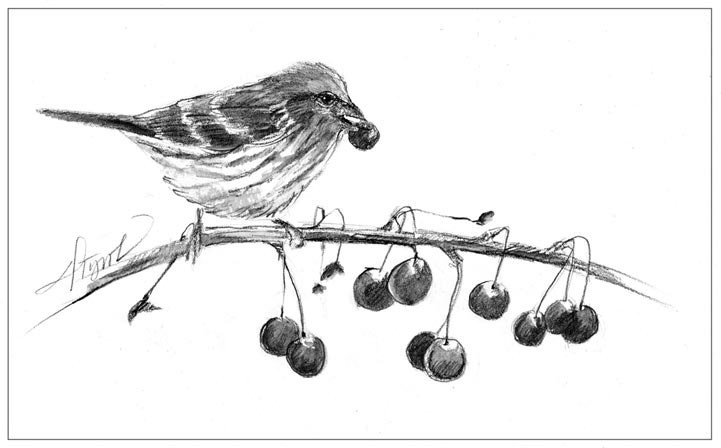
The old saw about “an apple a day” as the way to perfect health may have been overstated, but the apple is a great food and a nutritional bonanza.
A medium-sized apple has anywhere from 70 to 125 calories, depending on variety, mainly sugars, though some super sweet kinds have twice that. And it has vitamins, fiber, and is tasty. But apples are not just for people, they’re great for wildlife as well.
Deer, mice, bears, raccoons, turkeys and many songbirds relish apples. Abandoned orchards have long been popular with wildlife, but with the decline of New England agriculture they are being crowded out by forest and subdivision. To keep apple tree numbers up, we should plant some.
The first question: what kind? It depends on what creatures you’re trying to attract or assist, said John Bunker, the apple guy at Fedco Trees in Waterville, Maine.
If you want to help out the birds, go with crabapples, Bunker said.
Most experts recommend choosing crabapples with fruit smaller than three-quarters of an inch. They should be “persistent,” meaning the fruit stays on the tree rather than dropping off in the fall. Think of it as the natural equivalent of processed food with a long shelf life. Cedar waxwings, robins, and countless other bird species will descend on those trees in late winter or early spring. There are many persistent varieties of crabapples, including Adams, Holiday Gold, Indian Magic, Indian Summer, Pink Spires, Prairiefire, Snowdrift, and Sargent. Last year I planted Prairiefire crabs every 20 feet along a 100-yard stretch of road in front of my house. I chose the variety for its form, its bright red blossoms, and persistent fruit that’s the right size for birds.
Like me, most people plant crabapples in the yard. But what about the wildlife in my woods?
When it comes to adding some apple trees there it helps to remember that animals aren’t as picky as we are. They don’t care if it’s the latest big name in apples, or if it’s blemish-free. That’s good news, since you can skip the $25 trees in the catalog and go cheap, said Bunker.
One way is to save apple cores and scatter them in the woods. The wildlife enjoy the fruit and spread the seeds. Or rake up windfall apples from your neighbor’s lawn and do the same with them. Or, grow apple seedlings yourself: Toss the cores in a bag with a couple of handfuls of damp potting soil or peat moss and keep in the refrigerator for a few weeks. Then plant the seeds in potting soil. Transplant small seedlings in the woods or give them a couple years growth in the garden before setting them out. All these will be “mongrel” apples since apple trees don’t come true to type from seed (that’s why people propagate apples by grafting), but the animals don’t care, said Bunker.
Don’t want to mess with seeds? Buy rootstock. Rootstock is seedling apple trees that an orchardist would use to graft, splicing a scion from a known variety into it. But you can plant rootstock as is and it will make fine wildlife trees. Bunker emphasizes getting standard rootstock because it’s hardier and more vigorous than dwarf or semi-dwarf. And it’s cheap. You can generally get 10 rootstocks for what you would pay for one bare-root varietal apple tree. Buy in bulk and they’re even cheaper.
One key in successfully growing apples is sunlight.
“Apple trees that are crowded and shaded for a long time usually do not bear fruit...ensuring that a tree gets direct sunlight is the most effective way to enhance its productivity,” according to Wild Apple Trees for Wildlife, a booklet put out by the University of Maine Cooperative Extension.
So when you’re planting your young trees, look for existing clearings, plant in areas that have been harvested, or create small openings. Keep competing vegetation cut back so sunlight can get to your trees. Prune the trees every year or two to encourage new growth.
Most apples are not self-fruitful – they need pollen from a tree of a different variety to set fruit. Making several plantings through the forest is the best way to ensure good pollination and lots of fruit.
Bunker recommends setting out three or four trees in a group or cluster a few feet apart. To give them protection from animals while they get established, pound three or four small posts in the ground around them and encircle them with chicken wire. The wire doesn’t need to touch the ground. When the trees get a little taller, take the wire down.


Discussion *